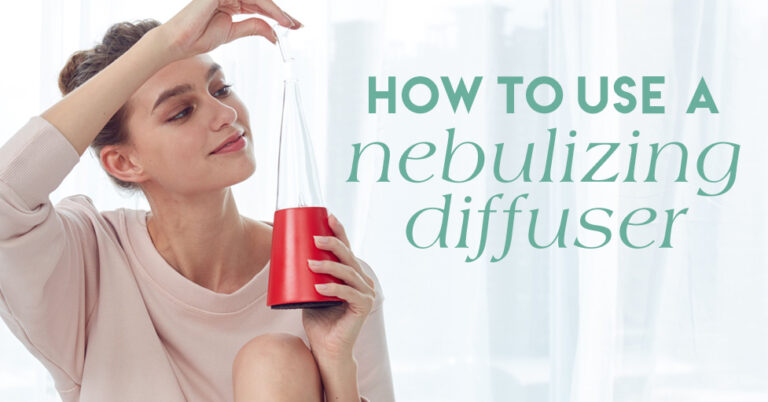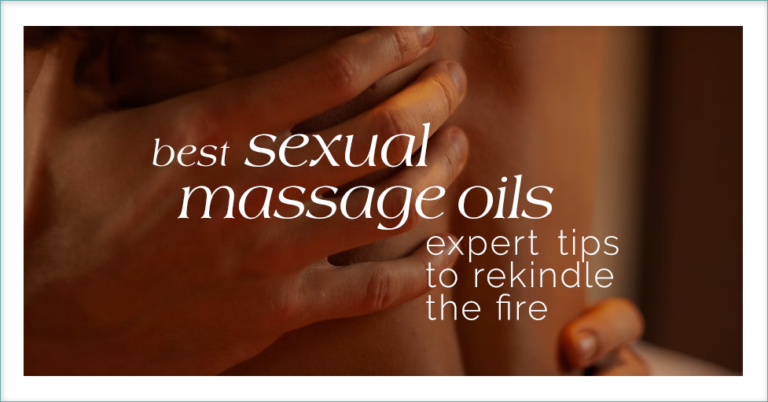Top 5 Best Essential Oils for Lymphatic Drainage Relief
Seeking effective solutions for better lymphatic health? Learn about the best essential oils for lymphatic drainage in this concise guide. With a focus on oils that detoxify, reduce inflammation and promote good circulation, you’ll discover how to integrate these natural remedies into your routine for improved wellness. Expect practical, advice without any fluff, and start your journey to enhanced lymphatic function today.
Aromatic Wisdom: Lymphatic Health Highlights
- Essential oils like citrus oils, geranium, rosemary, frankincense, peppermint, ginger, juniper and cypress can enhance lymphatic health by improving lymph fluid circulation and reducing swelling, especially when applied with massage techniques.
- Carrier oils, such as castor oil, jojoba oil, sweet almond oil, and coconut oil, are used to dilute essential oils for safe topical application during lymphatic drainage massages to stimulate the lymphatic system without causing skin irritation.
- Supporting lymphatic drainage can also include practices such as Gua sha, body scraping, whole-body vibration, dry brushing, and nebulizing diffusers for oil inhalation, alongside maintaining proper hydration and a balanced diet.
- Enhance your health and create a more aromatic environment by integrating the soothing scents of essential oils from your nebulizing diffuser into your daily wellness routine.
Unlocking the Power of Essential Oils for Lymphatic Health
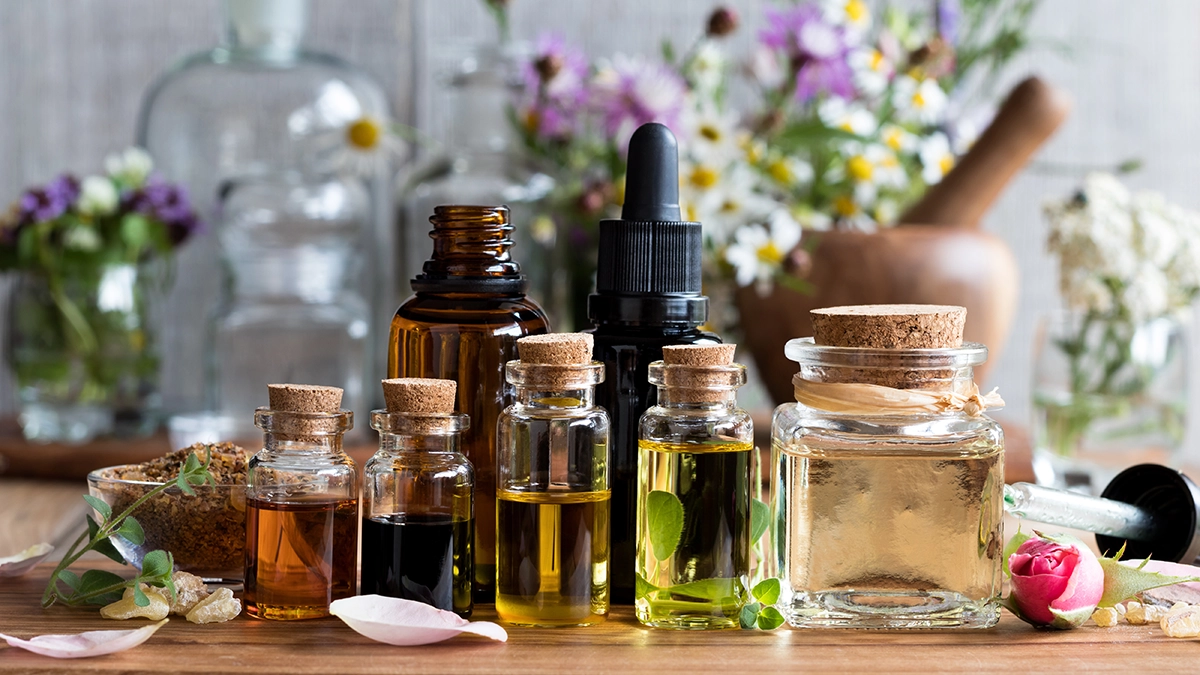
Essential oils, the aromatic compounds extracted from plants, have been used for centuries to promote health and well-being. Their therapeutic properties can be leveraged to support the lymphatic system, a silent warrior in our body’s fight against disease and toxins. Aromatherapy, the practice of utilizing essential oils for health benefits, can play a significant role in this regard, enhancing lymph fluid circulation and reducing swelling.
When combined with massage techniques, essential oils form a powerful tool in maintaining a healthy lymphatic system, keeping toxins at bay, and supporting the body’s natural detoxification process. Some essential oils that can be used to promote lymphatic health include:
- Citrus oils
- Geranium
- Rosemary
- Frankincense
- Peppermint
- Cypress
- Ginger
- Grapefruit
Essential Oils for Enhanced Lymphatic Health: An Active Compound Guide
| Category | Essential Oils | Primary Benefits | Active Compounds |
|---|---|---|---|
| Anti-inflammatory Action | Frankincense, Peppermint | Reduce inflammation, easing lymph fluid flow through nodes. | Frankincense: Alpha-pinene, Limonene; Peppermint: Menthol, Menthone |
| Circulation Boost | Rosemary, Ginger, Cypress, Juniper Berry | Stimulate blood and lymph circulation, aid in swelling reduction and toxin removal. | Rosemary: 1,8-Cineole, Alpha-pinene; Ginger: Gingerols, Zingiberene; Cypress: Alpha-pinene, Delta-3-carene; Juniper Berry: Alpha-pinene, Sabinene |
| Detoxification Support | Lemon, Grapefruit, Citrus Oils, Geranium | Support body’s detox pathways, indirectly aiding lymphatic system by reducing toxin load. | Lemon: Limonene; Grapefruit: Nootkatone, Limonene; Citrus Oils: Various Limonenes; Geranium: Citronellol, Geraniol |
Understanding the Lymphatic System
The lymphatic system functions as the body’s internal detox pathway, distinct yet complementary to the circulatory system, focusing on transporting lymph fluid to cleanse our body of impurities and invaders. It comprises an extensive network of lymph vessels, akin to roads in a vast transportation system, and lymph nodes, serving as checkpoints or filtration hubs located in vital areas such as the neck, armpits, groin, abdomen, and chest.
Lymph nodes excel in their role as the body’s filtration stations, capturing and neutralizing harmful substances, including pathogens and toxins. They are bustling with lymphocytes—specific types of white blood cells pivotal for immune defense—generated in the bone marrow and vital for combating threats identified within the lymph fluid.
As lymph fluid travels through this network, undergoing thorough filtration by passing through numerous lymph nodes, it is purified. This continuous purification process is crucial for defending against illness and maintaining overall health, ensuring that by the time lymph rejoins the bloodstream, it is free from detrimental substances.
However, a sluggish lymphatic flow can lead to a multitude of health issues ranging from minor sinus problems to poor circulation and severe illnesses. Regular movement and exercise are key to enhancing lymph flow, given the absence of a central pump in the lymphatic system.

Key Insights into Lymphatic Function
The lymphatic system is a cornerstone of our body’s defense mechanism, responsible for eliminating toxins and maintaining immune balance. Lymph nodes, acting as health condition monitors, filter lymph fluid—rich in cellular waste—and ensure its safe return to the bloodstream. This intricate system plays a vital role in fighting infection and supporting an overall healthy lifestyle.
Recognizing and Addressing Lymphatic Stagnation
When lymphatic flow becomes impaired, symptoms such as swollen glands, fluid retention, and puffy eyes can manifest, indicating a build-up of lymph fluid. Common culprits include sedentary habits, dietary factors, and external stressors, which can lead to chronic conditions if left unchecked.
Traditional treatment focuses on enhancing circulation and promoting fluid movement through manual therapy and lifestyle modifications.
What is Manual Lymph Drainage (MLD)?
Manual Lymph Drainage (MLD) is a gentle massage technique developed by Dr. Emil Vodder in the 1930s to enhance lymph flow and detoxification. Using rhythmic pressure and specific movements, MLD targets areas with concentrated lymph nodes, like the neck and armpits, to aid in removing waste from tissues. It’s distinct from traditional massages, focusing on stimulating lymphatic drainage rather than muscle manipulation.
Essential Oils: Nature’s Solution for Lymphatic Support
How can we further support this vital system? Enter aromatherapy and the power of essential oils. Incorporating essential oils into lymphatic health practices offers a natural approach to stimulate and treat the system.
- Anti-inflammatory Action: Oils like frankincense and peppermint reduce inflammation, easing the flow of lymph fluid through the nodes.
- Detoxification Support: Citrus oils, notably lemon, grapefruit, and sweet orange, are celebrated for their purifying capabilities, aiding in the breakdown and removal of cellular waste.
- Circulation Boost: Rosemary and ginger oils stimulate both blood and lymph circulation, aiding in the reduction of swelling and the promotion of toxin removal. Furthermore, Geranium, with its’ stimulating properties, enhance circulation, assisting in fluid retention reduction and swollen area relief.
The Best Essential Oils for Lymphatic Drainage
Essential oils can be a gamechanger when it comes to supporting lymphatic health. Certain oils, with their stimulating yet relaxing properties, are known to promote optimal blood circulation and proper lymph movement. For instance, geranium essential oil, with its antiseptic, antidepressant, and mildly diuretic properties, is known to stimulate the lymphatic system.
Tailoring Aromatherapy for Your Body’s Needs
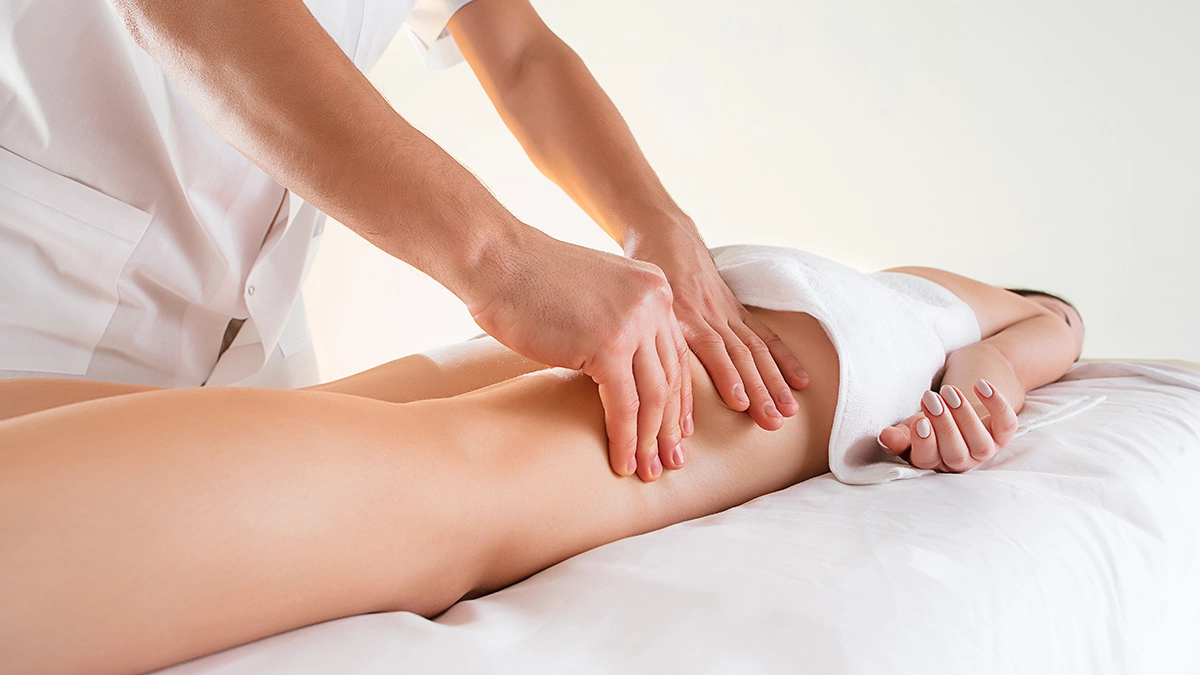
Blending essential oils is a highly personal process, much like an olfactory journey, where each blend is tailored to individual preferences. The art of blending allows you to explore various combinations of essential oils, resulting in a unique mix that can provide both personal satisfaction and beneficial outcomes.
Personalizing Your Essential Oil Blend
Creating your quintessential blend for lymphatic drainage can be an exciting process. Start by identifying your scent preferences and opt for organic or pesticide-free oils to ensure the best therapeutic properties. Crafting a balanced blend is somewhat akin to composing a symphony, with the top, middle, and base notes working together to create a harmonious scent that evolves pleasantly over time.
The blending process begins with small quantities, allowing room for adjustments and preventing wastage. Remember to keep a record of the specific amounts of each oil used in your custom blend, enabling you to reproduce your favorite scent in future batches.
Enhancing Blood Circulation and Lymph Flow
Certain essential oils, known for their lymphatic stimulation and anti-inflammatory properties, can play a significant role in enhancing blood circulation and lymph flow. Citrus essential oils, for instance, are recognized for reducing tissue swelling and promoting circulation. Other oils like cypress, rosemary, clary sage, Atlantic cedar, and peppermint are known for their venous tonics and anti-inflammatory properties, aiding in the improvement of blood and lymph flow.
By creating a synergistic blend of these oils, you can create a potent mixture that supports the lymphatic system. For example, blending grapefruit essential oil, known for its detoxifying effects, with cypress essential oil, which improves circulation and reduces swelling, can result in a highly effective mixture for lymphatic health.
Integrating Essential Oils into Lymphatic Massage
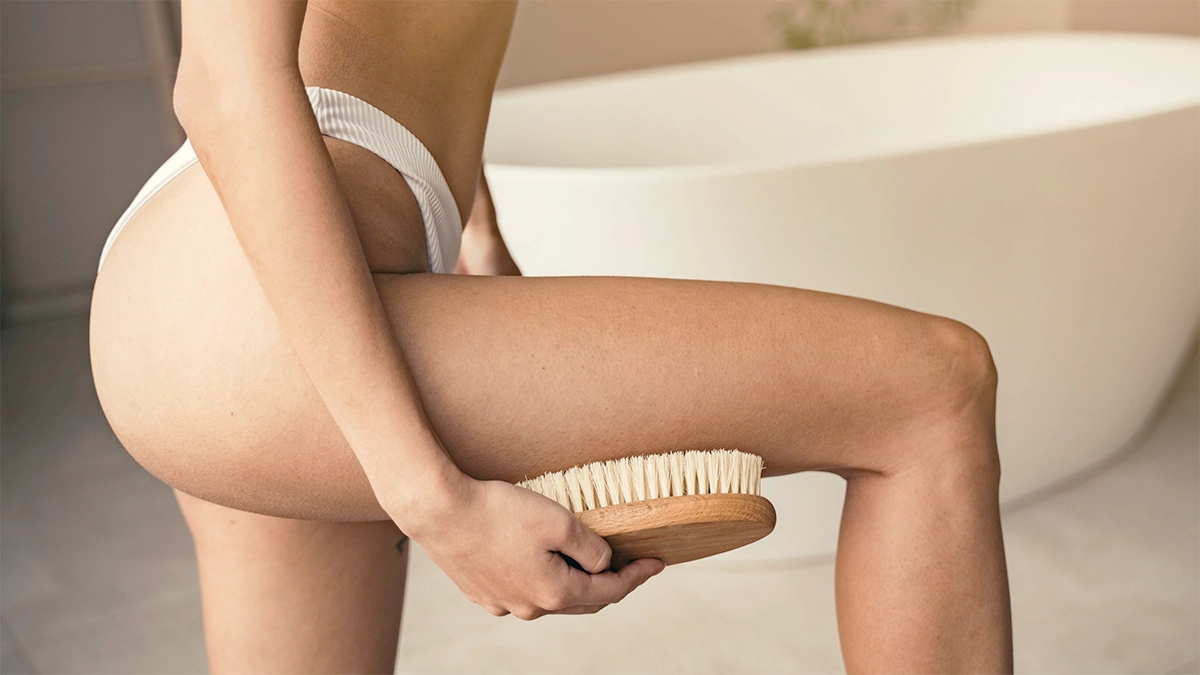
The use of essential oils in lymphatic massage can lead to:
- Reduced swelling in tissues
- Decreased body bloat
- Less joint swelling
- Pain reduction
When coupled with essential oils, lymphatic drainage massage can be an effective method to address lymphatic stagnation and lymphedema, enhancing the overall effectiveness of the massage.
Synergizing with Carrier Oils
While essential oils come packed with numerous benefits, their concentrated nature can potentially cause skin irritation if used undiluted. This is where carrier oils come in, acting as a protective layer between the skin and the essential oil. Carrier oils such as jojoba oil, sweet almond oil, and coconut oil are commonly used for lymphatic drainage.
Carrier oils not only offer a safe medium for topical application of essential oils but also complement them without interfering with their therapeutic properties. Given the potent nature of essential oils, maintaining a safe concentration for skin application is vital, highlighting the importance of synergizing with carrier oils.
Some common carrier oils, which are rich in fat soluble nutrients, include:
- Castor oil (anti-inflammatory and pain-relieving benefits are primarily due to ricinoleic acid, its main component, alongside oleic and linoleic acids, which all work together to reduce inflammation and alleviate discomfort when applied topically)
- Coconut oil
- Jojoba oil
- Sweet almond oil
- Olive oil
- Avocado oil
These carrier oils can be used alone or in combination with essential oils to create customized blends for various purposes.

Techniques for Effective Lymphatic Drainage Massage
To enhance lymphatic drainage, massage techniques should guide the lymph flow towards the heart without exerting excessive pressure, which may compress the lymphatic vessels. These techniques effectively promote lymphatic drainage.
Creating Your Own Massage Oil
Creating your own massage oil blend for lymphatic health can be an empowering experience. To ensure safe and effective use, essential oils must always be diluted with a carrier oil. Awareness of the proper dilution ratios is essential for safe topical application of these oils.
You can experiment with oils like:
- juniper berry
- rosemary
- peppermint
- lemon
- orange
- grapefruit
- ginger root
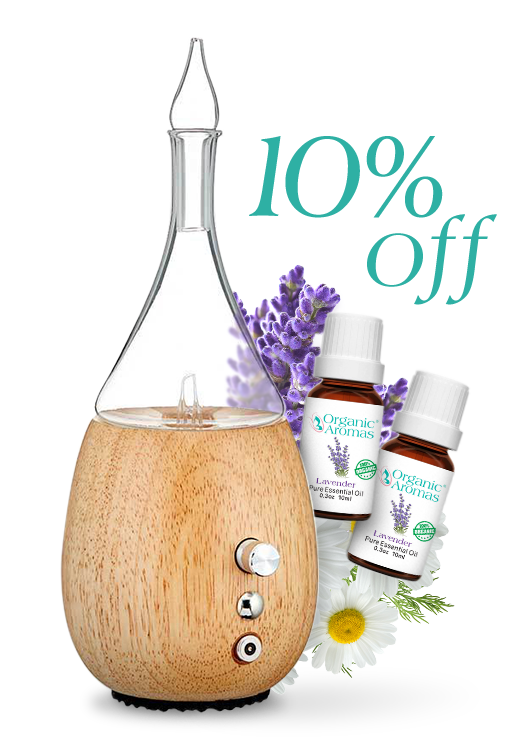
Join Now and Get a Coupon for %10 Off!
Lymphatic Drain Massage Oil Blend Recipe (2-3% solution)
Ingredients:
- 30 ml Castor or Jojoba Oil (as a carrier oil)
- 5 drops Grapefruit Essential Oil (for its detoxifying properties)
- 5 drops Geranium Essential Oil (known for stimulating the lymphatic system)
- 3 drops Ginger Essential Oil (to encourage circulation and warmth)
Instructions:
- Prepare Your Blend:
- Start by pouring the jojoba oil into a clean, dry bottle. Jojoba oil is chosen for its similarity to the skin’s natural oils, making it an ideal carrier.
- Add the grapefruit, geranium, and ginger essential oils to the jojoba oil. These oils are selected for their ability to support lymphatic drainage and improve circulation.
- Mix Thoroughly:
- Secure the lid on the bottle and gently shake to ensure all oils are well combined.
- Application:
- To use, apply a small amount of the blend to your palms and rub them together to warm the oil slightly.
- Gently massage the oil into the skin over lymph node areas such as the neck, armpits, groin, and along the inner thighs. Use light, upward strokes towards the heart to encourage lymph flow.
- For best results, perform the massage on clean skin and consider doing it before taking a shower to allow the warmth of the water to further assist circulation.
- Frequency:
- You can use this massage oil blend daily, especially if you’re feeling sluggish or have been stationary for an extended period. It’s also great after exercising to help clear the lymphatic system.
To create an effective blend for lymphatic drainage massage, consider incorporating body massage techniques. During the massage, use a gentle circular pattern over the lymph glands for effective use of the massage oil.
Complementary Practices to Support Lymphatic Drainage
In addition to using essential oils, other practices can also support lymphatic drainage. Techniques such as Gua sha and body scraping utilize stone or metal tools to guide lymphatic fluid towards the lymph nodes, enhancing lymphatic drainage.
Whole-body vibration is another method that helps open lymphatic vessels and supports normal lymph flow.
Dry Brushing: An Ally to Aromatherapy
Dry brushing is another effective technique that can stimulate the lymphatic system and potentially improve lymphatic drainage. The technique involves using a brush in circular motions over the body to gently stimulate and potentially dislodge blockages in lymphatic flow.
When essential oils are used in combination with dry brushing, the lymphatic drainage process can be further enhanced, offering a potent combination for overall lymphatic health.
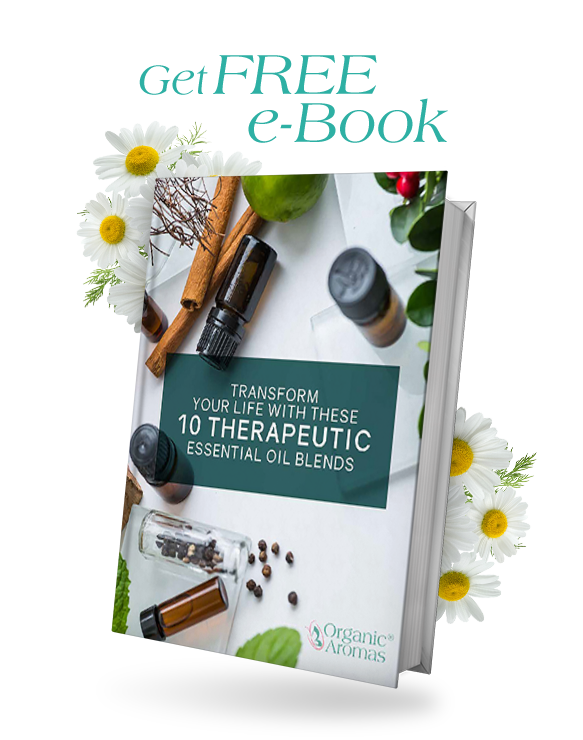
Sign Up to Get Your FREE Essential Oils e-Book Here
Inhalation of Essential Oils via Nebulizing Diffuser
Inhalation of essential oils offers another pathway to harness their therapeutic benefits. Nebulizing diffusers, like those offered by Organic Aromas, provide a way to deliver concentrated essential oils into the air, creating an environment conducive to physical healing and improving mental well-being.
Breathing in these pure, concentrated essential oils can aid your overall health and well-being, making nebulizing diffusers a great addition to your lymphatic health routine.
Hydration and Diet: The Foundation of Lymphatic Health
In addition to using essential oils and practicing lymphatic massage, maintaining proper hydration and a balanced diet is essential for optimal lymphatic system function. Inadequate hydration can lead to a buildup of toxins within the body due to impeded lymphatic flow.
Incorporating foods high in water content, such as fruits and vegetables, can significantly contribute to the health of the lymphatic system. Strategies to keep the body well-hydrated include:
- Not waiting to feel thirsty before drinking water
- Choosing beverages that are beneficial rather than burdensome to the detoxing organs
- Eating water-rich foods.

Sign Up to Get Your FREE
e-Book Here…
Ensuring Safe Use of Essential Oils
While essential oils offer numerous benefits, their safe use is paramount. For creating lymphatic drainage massage oil blends, it’s crucial to use organic or pesticide-free, unadulterated essential oils. Certain oils, like grapefruit essential oil, may cause photosensitivity, necessitating caution in their use.
Recognizing Signs of Allergic Reactions
It’s also important to recognize the signs of allergic reactions to essential oils. These can manifest as skin irritation or respiratory symptoms, requiring immediate discontinuation of use and medical advice.
Severe allergic reactions, like anaphylaxis, may occur with essential oil use, indicated by troubling symptoms such as difficulty in breathing, throat tightness, and instances of dizziness or fainting.
When to Consult a Professional
While the use of essential oils for lymphatic drainage can be beneficial, persistent swollen lymph nodes or other concerning symptoms should be assessed by healthcare professionals. Medical consultation is recommended if the swollen lymph nodes persist for more than two to four weeks and have characteristics such as being hard, rubbery, or immovable when pressed.
Even with the application of the best essential oils for lymphatic drainage, ongoing concerns should be assessed by healthcare professionals to rule out underlying health issues.

Join Our Exclusive Member Club to get Big Discounts!
Essential Oils for Lymphatic Drainage Relief: Concluding Insights
In conclusion, essential oils offer a promising avenue for enhancing lymphatic health. From creating personalized blends to integrating these oils into lymphatic massage, aromatherapy can play a significant role in promoting lymphatic drainage. Complementary practices like dry brushing, using a nebulizing diffuser, regular exercise, and maintaining proper hydration and diet further support this process.
While the use of essential oils for lymphatic health comes with numerous benefits, it’s essential to ensure their safe use. Recognizing signs of allergic reactions and consulting a professional when necessary are crucial steps in this journey. With the right knowledge and tools, you can harness the power of essential oils to support your lymphatic health and overall well-being.
Frequently Asked Questions
What oil to rub on swollen lymph nodes?
You can use castor oil for its anti-inflammatory and pain-relieving properties when massaging swollen lymph nodes.
How can I drain my lymphatic system fast?
To drain your lymphatic system fast, you can try hot and cold showers, deep breathing, castor oil packs, dry brushing, lemon water, hydration, infrared sauna, and lymphatic massage. Another effective method is to stay hydrated, practice deep breathing, use herbs and herbal tea, wear loose clothing with natural fibers, try hydrotherapy, frequent light exercise, receive manual lymphatic drainage massage, and use a far infrared sauna.
What are the benefits of using essential oils for lymphatic health?
Using essential oils can enhance lymphatic health by improving lymph fluid circulation, reducing swelling, and supporting the body’s natural detoxification process, ultimately promoting overall well-being.
What complementary practices can support lymphatic drainage?
In addition to dry brushing, using a nebulizing diffuser, and maintaining proper hydration and a balanced diet, incorporating exercises such as rebounding and yoga can also support lymphatic drainage.
What should I do if I have an allergic reaction to an essential oil?
If you experience signs of an allergic reaction to essential oils, like skin irritation or respiratory symptoms, discontinue use immediately and consult a medical professional for advice.




